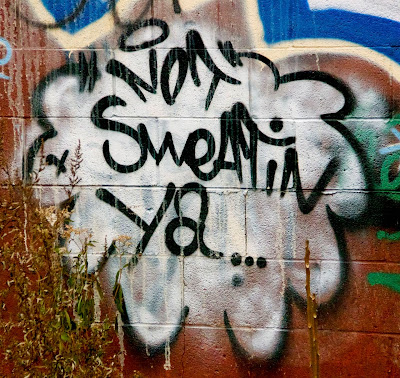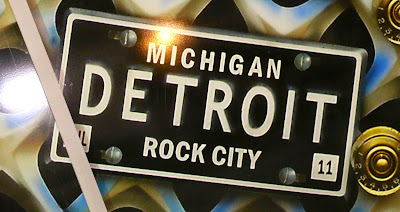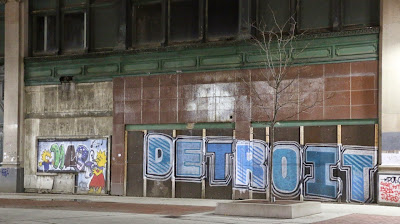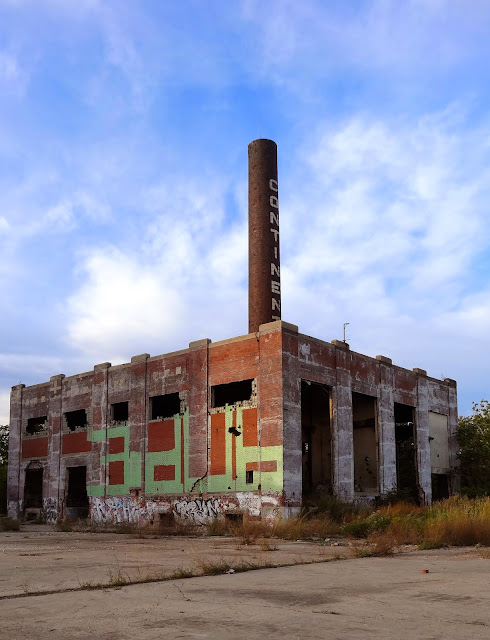Here is a drone video of the Packard Plant on the East Side of Detroit...pretty cool video. Click on the text link below the picture to view. Credits for the video are on the YouTube page where it's posted.
Mural art and underground tagging by some famous and some 'faceless' street artists in Detroit, Michigan.
Saturday, December 28, 2013
Saturday, December 14, 2013
Random Detroit Sh-t! If you know 'em tag 'em....
So as promised, here's some random stuff that I'm going to lump together.
If you're from around the D, you'll recognize a pattern of where these shots safe being taken.
There's some really cool stuff out there. You guys need to keep tagging and drawing those animals. The homeless dudes I talk to say that they really like them...sort of cheers them up a bit.
I wonder what winter's going to bring?
Hopefully some cools hots of work being done on the recently sold
Packard Plant on the East Side. We'll see.....
Sunday, December 8, 2013
The Packard Plant in Black and White
Here's a look at a couple of pictures of the Packard Plant.
I like the contrasts of the black and white photos. Depending on what time of day you shoot, you can get some very different pictures if you use the light correctly. Forever changing...
 |
| Looking down the Main Entrance by the front offices |
 |
| Inside - ravaged by scrappers |
| The Courtyard |
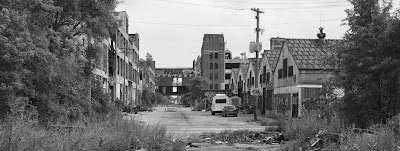 |
| The old Machine Shops |
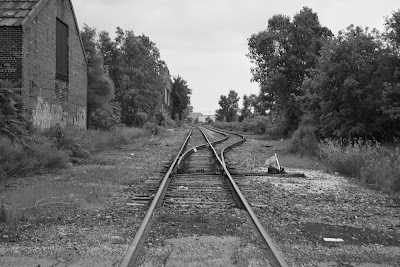 |
| The old train tracks - still in use for the produce company down the way. |
| Elevator shaft - looking up |
Saturday, December 7, 2013
Wednesday, December 4, 2013
This is how it's done...
Check out this page of tagging trains and other graffiti in Europe. The videos are several minutes long, but it shows how it's done. Cool stuff and worth the watch.
Click on the links below...
Click on the links below...
Saturday, November 16, 2013
Sunday, November 10, 2013
The old Continental Engine Plant...
This partially razed ruin was once part of the world's largest motor factory. Built in 1912, the floorspace of the Continental Motors plant on Detroit's east side covered 12 acres. The facility provided engines to Detroit car and truck manufacturers the for the first several decades of the 20th Century. During the 1940's and 1950's this plant built tank engines for the US Army and aircraft engines for the US Navy. Production of industrial engines and electric governing devices continued at the facility into the 1960's.
Continental closed the plant in 1965, due in part to the increased militancy of the labor force. But militant labor unionism was but one aspect of the destructive leftward shift in the political landscape of the USA in the 1960's. The most famous political movement of the time, the "civil rights" revolution, allowed the black population to liberate itself, with the substantial connivance of the mass media of news and entertainment, from abiding by the rule of law that it had previously been held much more accountable to.
By the 1960's, a dramatic demographic shift was well underway in Detroit's lower east side where this plant was located. During that period, black criminals began in earnest, the long and bloody path in destroying white Detroit. There can be no doubt that the owners of this factory saw the way the wind was blowing and like so many other manufacturers in Detroit and the white population in general, evacuated the city. While white liberals were dreamily marching hand-in-hand with Martin Luther King in cities all over the USA, predatory black criminal violence was transforming Detroit into the most dangerous major city in America. White American society simply lacked the determination to face down the black power revolution and the unfortunate white citizens who bore the brunt of the onslaught were left defenseless by a political establishment that hadn't the will to protect them.
|
--
|
Credit to Grover Lloyd for the text on this page
|
Subscribe to:
Posts (Atom)













